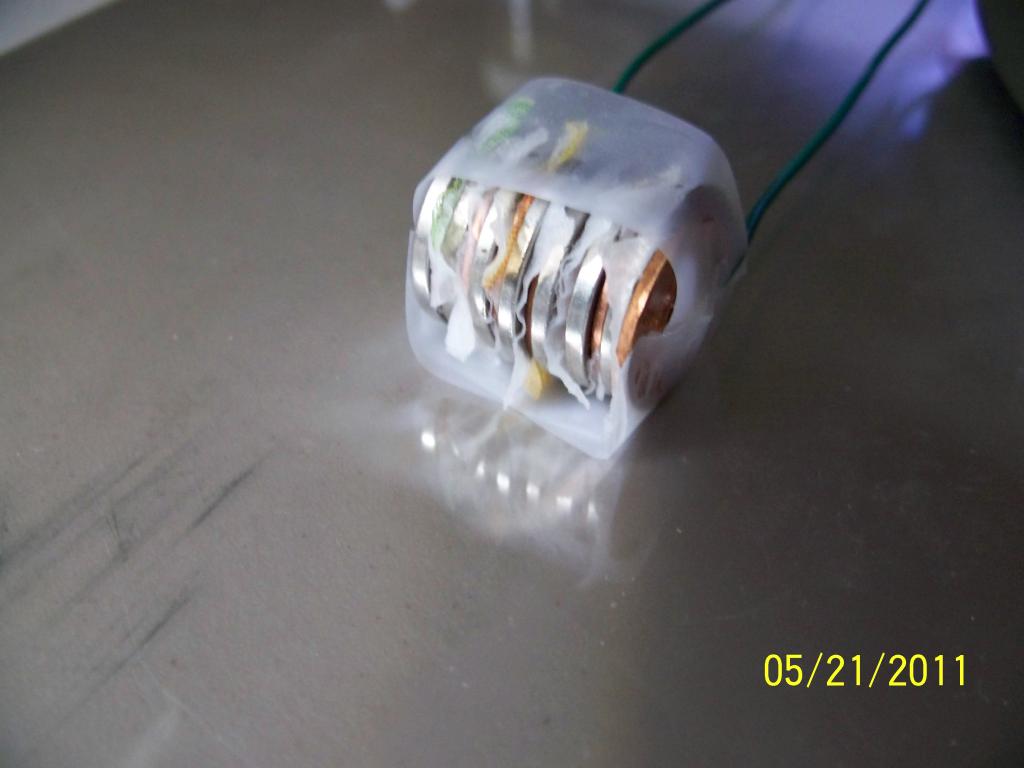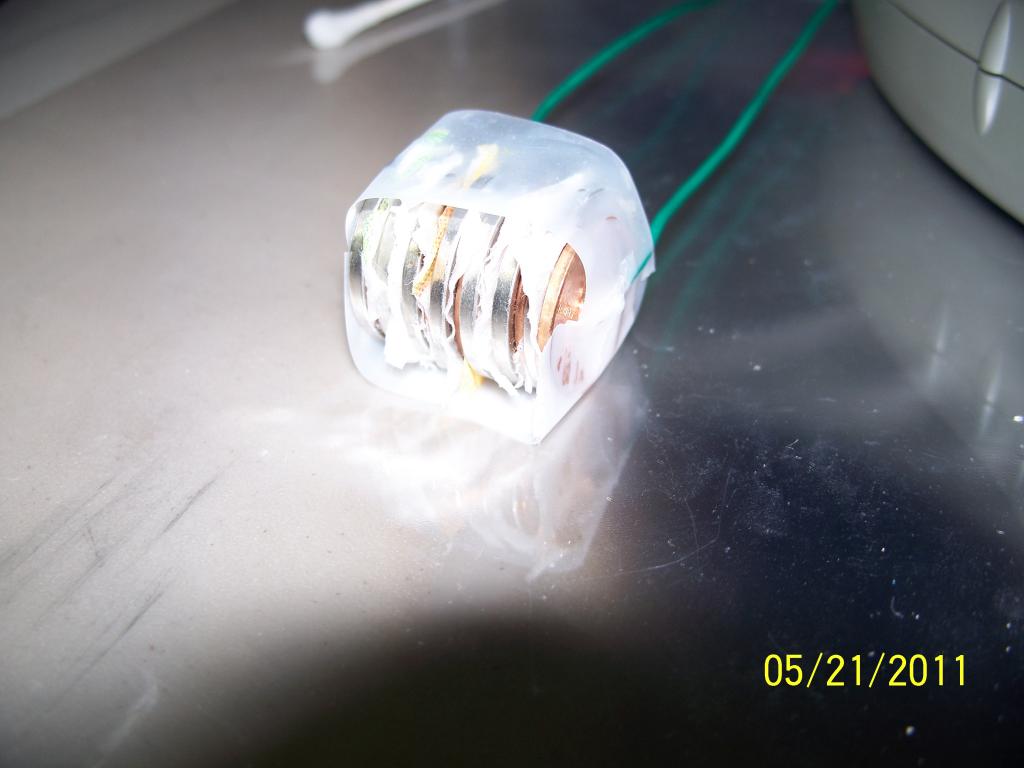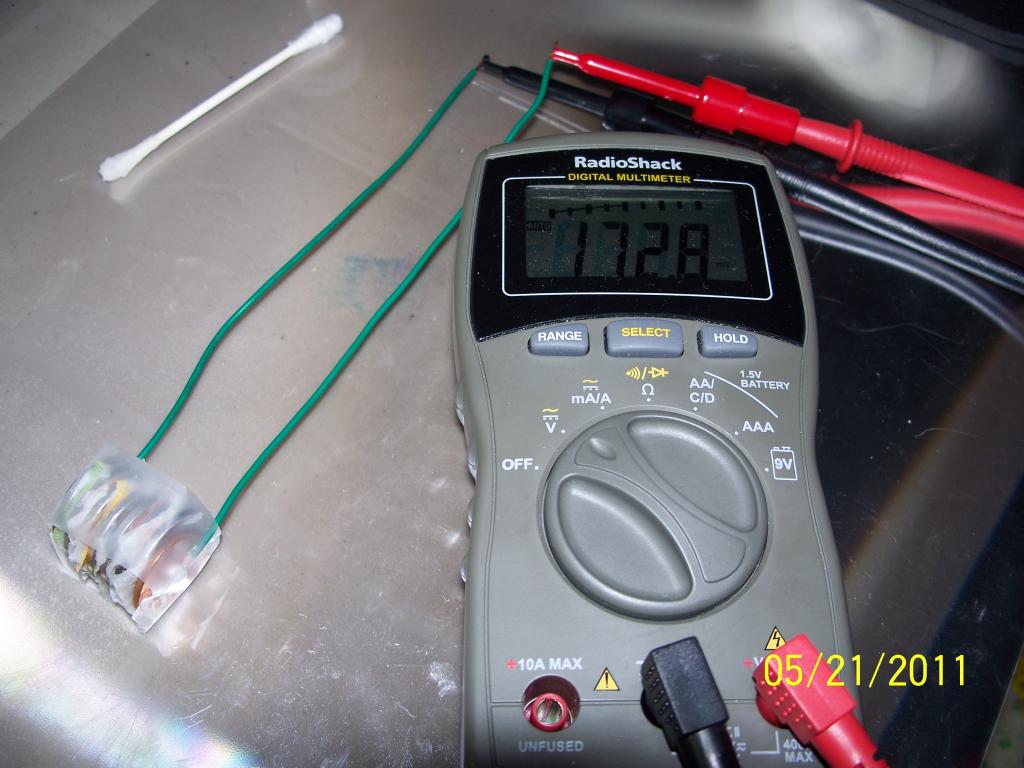How to Make homemade batteries...
This is a simple build for those of you that don't know how to do it. Parts you will need.
One end of the stack should start with a penny and the other end should end with a nickle. Before I started, I soldered a wire to a penny and one to a nickle for the end pieces. It makes it easier to measure the voltage after applying the vinegar to the paper towel pieces.
I used tape to hold it together, and applied the vinegar after it was stacked, In the picture, you can see that it generates 172.8 milivolts. If I were to apply the vinegar to the paper towel first, and then stack them it would generate a bit more voltage, closer to 1 volt, but the smell gets to me. It also helps if the coins are fairly new/shiny.
- About 7 copper coins (pennies)
- the same amount of nickle or silver coins (nickles or dimes)
- A paper towel
- Vinegar or another electrolyte
- Penny, paper towel, nickle, paper towel, and repeat using all 10 coins
One end of the stack should start with a penny and the other end should end with a nickle. Before I started, I soldered a wire to a penny and one to a nickle for the end pieces. It makes it easier to measure the voltage after applying the vinegar to the paper towel pieces.
I used tape to hold it together, and applied the vinegar after it was stacked, In the picture, you can see that it generates 172.8 milivolts. If I were to apply the vinegar to the paper towel first, and then stack them it would generate a bit more voltage, closer to 1 volt, but the smell gets to me. It also helps if the coins are fairly new/shiny.





Comments
I guess I should note that you should disassemble the battery and wash it off with water when your finished. My batteries corroded after about 16 hours.
What I really think would happen is that the nickle would end up on the pennies.
We used a galvanized nail for the zinc electrode. A galvanized nail is a steel or iron nail coated with zinc. I believe the carbon electrode was a piece of pencil lead. For the lemon battery, we just stuck the zinc and copper electrodes in the lemon. A potato actually works slightly better than a lemon, and a banana or onion perform about the same as a lemon. The details are in the attached document.
Dave
Guess I'll have to try powering my propeller module with 2 or 3 lemons in series.
Cheers.